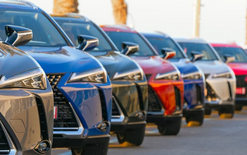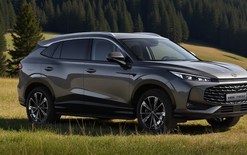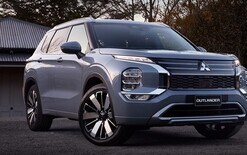Crossing over in style
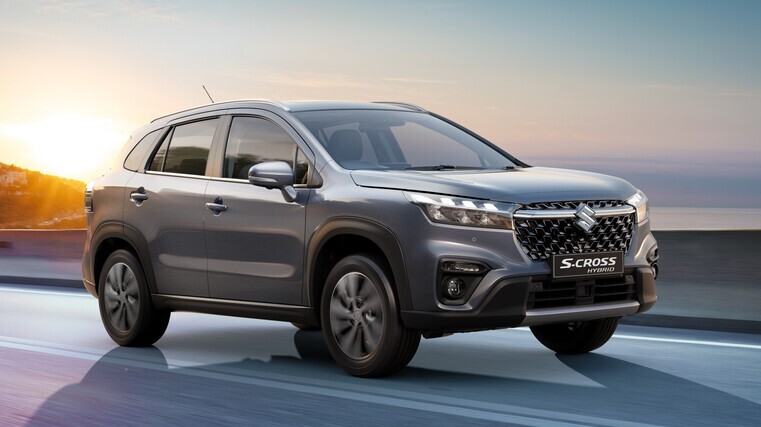
Enhanced specification and improved economy are central to the new S-Cross Hybrid crossover SUV, says Suzuki.
The marque’s latest and largest passenger model is available in two-wheel drive (2WD) or optional part-time Allgrip all-wheel drive (AWD), and is its most comprehensively equipped car to date.
In addition, the introduction of the Suzuki Smart Hybrid Vehicle system (SHVS) has lowered both fuel consumption and carbon-dioxide emissions.
Compared to the 1.4-litre turbocharged JX and JLX S-Cross, the S-Cross Hybrid is up to 16.7 per cent more economical and has up to 19 per cent lower emissions.
In fact, emissions of 124 grams per kilometre for the 2WD and 133g/km for the AllGrip model are actually lower than the slightly smaller Vitara Hybrid.
In the combined fuel-consumption test, the new S-Cross JLX Hybrid 2WD averages 5.5l/100km compared to 6.6k/km – tested under 3P-WLTP regime – for the outgoing S-Cross JLX.
The Allgrip Hybrid, meanwhile, averages 5.9l/100km compared to 6.9l/100km for the S-Cross JLX Allgrip for an improvement of 14.5 per cent.
Its mild hybrid system consists of a 48-volt integrated starter generator that works alongside Suzuki’s 1.4-litre Boosterjet turbocharged internal combustion engine to help improve fuel efficiency.
There’s a 48-volt lithium-ion battery and 48 to 12-volt DC/DC converter with a greater supply of voltage than a conventional 12-volt battery.
The hybrid system increases regenerated energy from deceleration and the amount of electric-motor assist to suppress fuel consumption and enhance performance. While charging the 10Ah lithium-ion battery when the car is decelerating or braking, the hybrid has other benefits. On a steady or light throttle, the battery helps power all extra electrical systems, such as safety features, air conditioning, Bluetooth and smartphone connectivity.
At the same time, the 95kW and 1,373cm3 K14D Boosterjet Turbo, four-cylinder, direct injection provides a good spread of power that’s particularly strong in the useful lower rev range.
This engine produces 235Nm of torque between 2,000 and 3,000rpm – an increase of 6.8 per cent over the standard 1.4 Boosterjet model. Towing ability also improves with the maximum for a braked trailer up from 1,200kg to 1,500kg.
Electrically operated rack and pinion steering is standard along with four-wheel disc brakes that are ventilated at the front.
MacPherson strut front suspension is complemented by torsion beam at the rear and there are coil springs all round. The 17-inch polished face alloy wheels are shod with 215/55 R17 tyres.
The S-Cross underwent considerable testing on European roads that further enhanced the car’s handling and stability during suspension development.
Despite the increased technology and standard equipment, the S-Cross Hybrid is only marginally heavier than the non-hybrid version with both variants weighing 135kg more.
The Allgrip technology is designed to maximise the performance of the six-stage automatic transmission, engine and safety systems depending on road surfaces and conditions.
Four selectable Allgrip modes allow the driver to choose between auto for typical driving conditions, sport for improved performance, snow for slippery surfaces and lck for accessing mud or sand surfaces.
High specification
Improved standard specifications have made the S-Cross Hybrid includes a panoramic sunroof with electrically operated double-sliding glass panels. This is a first for the S-Cross in New Zealand.
Also standard are heated front seats and LED lighting with automatic levelling and light-sensing LED projector headlamps that turn on with nightfall or when lighting is low. LED daytime running lamps keep car visible with low electrical usage.
A 360-degree and reversing camera provides an all-round bird’s eye vision and three-dimensional views, provided by four external cameras.
A high-contrast LCD display for the dual-zone air conditioning makes it easy to set cabin temperature while the nine-inch infotainment screen display provides information on fuel consumption, hybrid energy flow, satellite navigation, Android Auto and wireless Apple CarPlay.
With the standard lane-departure warning function at speeds of more than 60kph, a monocular camera detects lane markers and warns the driver if the Suzuki strays from its lane. Weaving alert provides audio and visual warnings should the car stray from its line or become erratic, which may be due to driver fatigue.
Other standard features include front and rear-parking sensors incorporating ultrasonic sensors in the front and rear bumpers, keyless entry and push button start. Blind-spot monitoring above 15kph detects other vehicles located in or approaching the rear blind spots.
When a vehicle is detected, an LED icon illuminates with an audible alert.
There are seven airbags for the front, side, curtain and driver’s knee, and adaptive cruise control uses millimetre-wave radar that automatically maintains a safe distance from the vehicle in front.
Stop-and-go function brings the car to a full stop when needed and hill-hold control prevents the S-Cross from rolling backwards when the motorist moves from the brake pedal to the accelerator pedal. The AWD model adds hill-descent control.
The S-Cross Hybrid is equipped with Suzuki’s dual-sensor brake support (DSBS), an autonomous braking system using a monocular camera and laser sensor to detect vehicles or pedestrians in front if a collision is imminent. When that’s apparent, the DSBS issues a warning or engages an automatic brake.
There is a leather-covered steering wheel, heated front seats, leather-effect interior garnishes, leather and leather-effect weave seat upholstery and automatic rain-sensing windscreen wipers. Electrically folding and heated door mirrors with signal lamps are standard.
The host of on-board storage areas comprises a multi-position luggage area, overhead console, front center console box, adjustable armrest for small items and a rear centre armrest with cupholders.
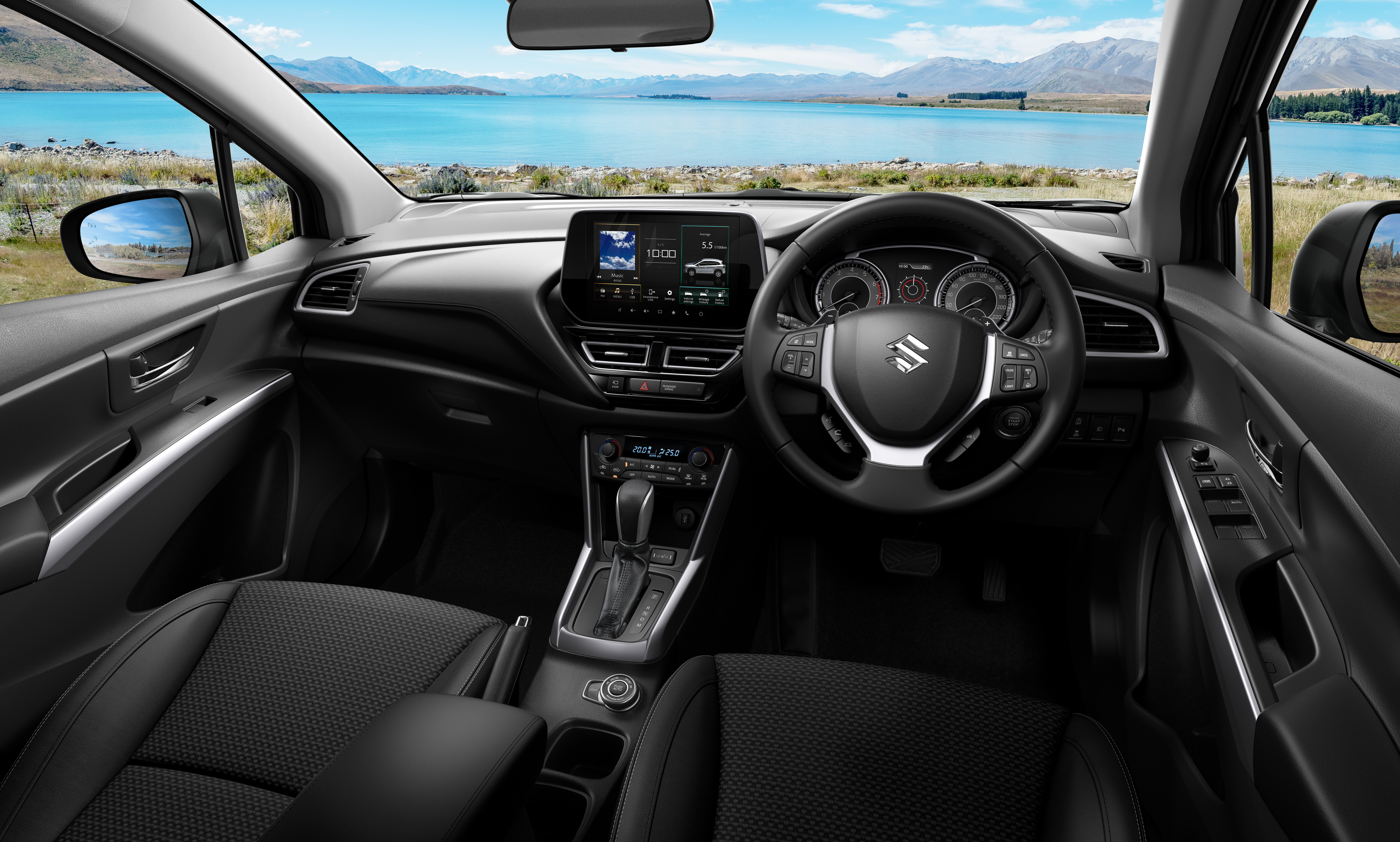
Distinctive looks
Sitting on a 2,600mm wheelbase and measuring 4,300mm long, the latest S-Cross makes a strong statement with its piano-black front grille, front and rear under-garnishes, wheel-arch extensions, lower-body mouldings and silver roof rack.
Katuya Kotoda, who designed the new model, sought to incorporate a high bonnet and rear deck with the aim of visually raising the car’s centre of gravity.
He believes a design highlight is the front grille with headlamps that come off to give a sharp impression. Each of the headlamps and rear-combination lamps uses three signature lamps to give off a distinctive look. “We had the greatest difficulty achieving an aerodynamic form, while maintaining an SUV look,” notes Kotoda.
At the same time, Suzuki has aimed to offer a vehicle with “impressive” ergonomics, a fine chassis with good handling and roadholding, and a comprehensive level of standard specification.
Six of the seven colour options for the New Zealand market are finished in pearlescent paint consisting of bronze, blue, red, white, black and grey. The seventh colour is “silky” silver metallic.
With a recommended retail price of $42,990 for the JLX Hybrid 2WD and $45,990 for the JLX Hybrid AWD, the S-Cross comes with a three-year/100,000km new-vehicle warranty and a two-year powertrain warranty extension for a total of five years’ cover, plus Suzuki’s five-year roadside assistance.



